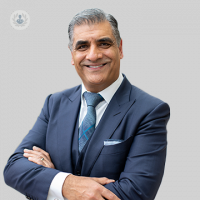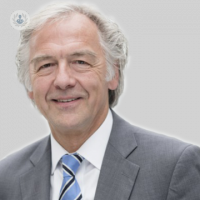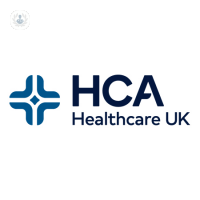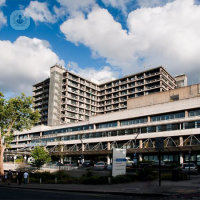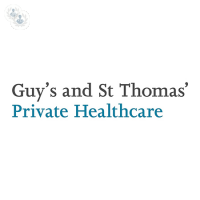What is aortic valve replacement (minimally-invasive)?
Minimally-invasive aortic valve replacement (MIAVR) uses a much smaller incision compared to traditional aortic valve replacement methods, which means patients recover much faster and the scar post-surgery is noticeably smaller too. MIAVR is used to treat patients with narrow or leaking valves who often complain of chest pains or shortness of breath. The technique is similar to that of keyhole surgery. Previously, surgeons used to have to split open the whole breastbone to have access to the valve and it would take several months for the wound to heal. Now patients recover more quickly, reduce their length of stay in the hospital and it reduces bleeding so not so much blood is transfused.
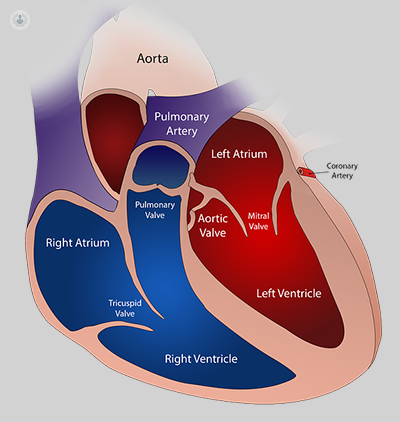
Why is it done?
This procedure is performed to replace a faulty aortic valve with an artificial valve. The aortic valve is the valve responsible for pumping blood from the left ventricle to the aorta, which carried oxygenated blood to the rest of the body. The aortic valve stops blood from flowing back into the left ventricle, which is known as aortic regurgitation. Sometimes the aortic valve may struggle fully open, meaning less blood is able to leave the heart. This problem is called aortic stenosis.
These faults with the valve can result from:
- Congenital defects
- Age
- Bacterial infection of the valve
For both of these conditions, you may have experienced the following symptoms:
- Dizziness
- Swelling in the limbs
- Shortness of breath
- Fatigue
- Chest pain
- Syncope
What does it involve?
After being anaesthetised, the surgeon makes a small incision of 5-7cm in either the right-hand side of the chest close to the sternum (the breastbone), or between the ribs on your side. If special instruments are used to perform the surgery, several small incisions will be made. Sometimes, robotic instruments will be used to perform the surgery. You will be connected to a heart-lung machine which acts as your heart and lungs during surgery. Next, the aortic valve is removed and replaced with a new one. After the incisions are closed, you will be moved into a post-operative room or ward.
How do you prepare for minimally-invasive aortic valve replacement?
Before the operation, you will have had a thorough examination, as well as an ECG, blood tests, an echocardiogram, a chest X-ray and a coronary angiogram. Additionally, the surgeon will have to determine what type of replacement valve should be used. You can either use an artificial valve which require life-long blood-thinning medication. You could alternatively have a biological valve, sourced from pigs, cows or human hearts (organ donors).
Your surgeon will explain when to stop eating and drinking before surgery. You may also have to stop taking certain medications before the procedure. This procedure involves you being put to sleep with general anaesthesia.
Aftercare:
Following surgery you will be closely monitored in an intensive care unit (ICU). You may be connected to a ventilation machine to help with your breathing. You will also have a chest drain tube to drain excess fluid and air from the operative site. After a couple of days some dressings will be removed and replaced. You can normally sit up in a chair a few days after the procedure, as well as walking with assistance. You can usually leave the hospital 3-5 days following surgery. You will usually have a follow-up appointment a week later to discuss your progress and to remove stitches. It is important to take it easy following surgery, and avoid strenuous activity for at least several weeks.
Alternatives to this treatment:
The alternative to minimally-invasive aortic valve replacement is open surgery. This can involve the rib cage being removed in parts to gain access to the chest cavity. This is major surgery, with much longer recovery times with more pain and scarring.
06-06-2018 09-19-2023Aortic valve replacement (minimally invasive)
Mr Inderpaul Birdi - Cardiothoracic surgery
Created on: 06-06-2018
Updated on: 09-19-2023
Edited by: Kate Forristal
What is aortic valve replacement (minimally-invasive)?
Minimally-invasive aortic valve replacement (MIAVR) uses a much smaller incision compared to traditional aortic valve replacement methods, which means patients recover much faster and the scar post-surgery is noticeably smaller too. MIAVR is used to treat patients with narrow or leaking valves who often complain of chest pains or shortness of breath. The technique is similar to that of keyhole surgery. Previously, surgeons used to have to split open the whole breastbone to have access to the valve and it would take several months for the wound to heal. Now patients recover more quickly, reduce their length of stay in the hospital and it reduces bleeding so not so much blood is transfused.

Why is it done?
This procedure is performed to replace a faulty aortic valve with an artificial valve. The aortic valve is the valve responsible for pumping blood from the left ventricle to the aorta, which carried oxygenated blood to the rest of the body. The aortic valve stops blood from flowing back into the left ventricle, which is known as aortic regurgitation. Sometimes the aortic valve may struggle fully open, meaning less blood is able to leave the heart. This problem is called aortic stenosis.
These faults with the valve can result from:
- Congenital defects
- Age
- Bacterial infection of the valve
For both of these conditions, you may have experienced the following symptoms:
- Dizziness
- Swelling in the limbs
- Shortness of breath
- Fatigue
- Chest pain
- Syncope
What does it involve?
After being anaesthetised, the surgeon makes a small incision of 5-7cm in either the right-hand side of the chest close to the sternum (the breastbone), or between the ribs on your side. If special instruments are used to perform the surgery, several small incisions will be made. Sometimes, robotic instruments will be used to perform the surgery. You will be connected to a heart-lung machine which acts as your heart and lungs during surgery. Next, the aortic valve is removed and replaced with a new one. After the incisions are closed, you will be moved into a post-operative room or ward.
How do you prepare for minimally-invasive aortic valve replacement?
Before the operation, you will have had a thorough examination, as well as an ECG, blood tests, an echocardiogram, a chest X-ray and a coronary angiogram. Additionally, the surgeon will have to determine what type of replacement valve should be used. You can either use an artificial valve which require life-long blood-thinning medication. You could alternatively have a biological valve, sourced from pigs, cows or human hearts (organ donors).
Your surgeon will explain when to stop eating and drinking before surgery. You may also have to stop taking certain medications before the procedure. This procedure involves you being put to sleep with general anaesthesia.
Aftercare:
Following surgery you will be closely monitored in an intensive care unit (ICU). You may be connected to a ventilation machine to help with your breathing. You will also have a chest drain tube to drain excess fluid and air from the operative site. After a couple of days some dressings will be removed and replaced. You can normally sit up in a chair a few days after the procedure, as well as walking with assistance. You can usually leave the hospital 3-5 days following surgery. You will usually have a follow-up appointment a week later to discuss your progress and to remove stitches. It is important to take it easy following surgery, and avoid strenuous activity for at least several weeks.
Alternatives to this treatment:
The alternative to minimally-invasive aortic valve replacement is open surgery. This can involve the rib cage being removed in parts to gain access to the chest cavity. This is major surgery, with much longer recovery times with more pain and scarring.


Heart health: TAVI vs. AVR – Part 1
By Mr Neil Roberts
2024-11-20
Our hearts are responsible for keeping us alive. However, there are a myriad of problems that can impact our heart health, one of which is aortic stenosis. There are two surgical options to treat this problem: TAVI and AVR. In this two-part series of articles, leading consultant cardiothoracic surgeon, Mr Neil Roberts, explains these procedures and the pros and cons of each. But first, what exactly is aortic stenosis? See more
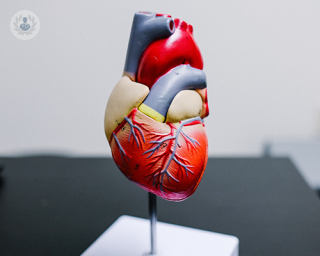

How successful is keyhole aortic valve surgery?
By Mr Christopher Young
2024-11-20
Keyhole aortic valve surgery, also known as minimally invasive aortic valve replacement (mini-AVR), is a modern surgical technique used to treat conditions like aortic valve stenosis or aortic regurgitation. This article takes a look at how this procedure's success is highly favourable, offering numerous benefits for patients. See more

What is minimally-invasive aortic valve replacement surgery?
By Mr Toufan Bahrami
2024-11-20
Mr Toufan Bahrami is a renowned cardiothoracic surgery who is a leader in minimally-invasive heart valve surgery. Here he explains one type - minimally-invasive aortic valave replacement surgery. See more


Heart health: TAVI vs. AVR – Part 2
By Mr Neil Roberts
2024-11-20
When aortic stenosis threatens the heart, two treatment options are TAVI and AVR. In the second part of this article, top cardiothoracic surgeon Mr Neil Roberts lays out the advantages and disadvantages of these procedures and explains when each would be recommended. See more
Experts in Aortic valve replacement (minimally invasive)
-
Mr Toufan Bahrami
Cardiothoracic surgeryExpert in:
- Minimally invasive cardiac surgery
- Mitral valve repair (minimally invasive)
- Aortic valve replacement (minimally invasive)
- Beating heart coronary heart bypass surgery (minimally invasive)
- Redo cardiac surgery
- Endoscopic coronary artery bypass surgery
-
Professor Aung Ye Oo
Cardiothoracic surgeryExpert in:
- Aortic root surgery
- Heart valve surgery
- Coronary bypass surgery
- Aortic valve replacement (minimally invasive)
- Marfan syndrome
- Aortic valve replacement
-
Mr Inderpaul Birdi
Cardiothoracic surgeryExpert in:
- Mitral valve repair (minimally invasive)
- Aortic valve replacement (minimally invasive)
- Bicuspid aortic valve
- Beating heart coronary heart bypass surgery (minimally invasive)
- Thoracic surgery
- Valvular repair surgery
-
Mr Paul Modi
Cardiothoracic surgeryExpert in:
- Mitral valve repair (minimally invasive)
- Coronary bypass surgery
- Atrial Fibrillation
- Coronary surgery
- Heart valve surgery
- Aortic valve replacement (minimally invasive)
-
Professor Christoph Nienaber
CardiologyExpert in:
- Coronary angiography and invasive cardiology
- Aortic valve replacement
- Aortic valve replacement (minimally invasive)
- Minimally invasive techniques
- Hypertension (high blood pressure)
- Hereditary diseases
- See all

The Harley Street Clinic - part of HCA Healthcare
The Harley Street Clinic - part of HCA Healthcare
35 Weymouth Street, London. W1G 8BJ
No existe teléfono en el centro.
By using the telephone number provided by TOP DOCTORS, you automatically agree to let us use your phone number for statistical and commercial purposes. For further information, read our Privacy Policy
Top Doctors

The Royal Free Hospital
The Royal Free Hospital
Pond Street, Hampstead. NW3 2QG
No existe teléfono en el centro.
By using the telephone number provided by TOP DOCTORS, you automatically agree to let us use your phone number for statistical and commercial purposes. For further information, read our Privacy Policy
Top Doctors

Westminster Bridge Consulting Rooms at St Thomas' Hospital Private Healthcare.
Westminster Bridge Consulting Rooms at St Thomas' Hospital Private Healthcare.
Westminster Bridge Road, London
No existe teléfono en el centro.
By using the telephone number provided by TOP DOCTORS, you automatically agree to let us use your phone number for statistical and commercial purposes. For further information, read our Privacy Policy
Top Doctors
-
The Harley Street Clinic - part of HCA Healthcare
35 Weymouth Street, London. W1G 8BJ, Central LondonExpert in:
- Cancer
- Head and neck cancer
- Cardiology
- Intensive care
- Diagnostic Imaging
- Women’s health
-
The Royal Free Hospital
Pond Street, Hampstead. NW3 2QG, Central LondonExpert in:
- General Surgery
- Orthopaedic surgery
- Robotic Surgery
- Dermatology
- Obstetrics and Gynaecology
- Paediatrics
-
Westminster Bridge Consulting Rooms at St Thomas' Hospital Private Healthcare.
Westminster Bridge Road, London , SE1 South Bank LondonExpert in:
- General Surgery
- Orthopaedic surgery
- Plastic surgery, reconstructive and aesthetics
- Endocrinology
- Obstetrics and Gynaecology
- Paediatrics
- See all
- Most viewed diseases, medical tests, and treatments
- Genetic testing
- Minimal access surgery (keyhole surgery)
- Aortic aneurysms
- Anxiety
- Long Covid
- Medicolegal
- Robotic surgery
- Hypertension (high blood pressure)
- MRI
- Fatty liver
